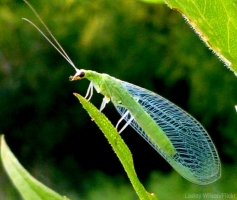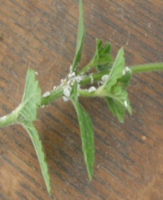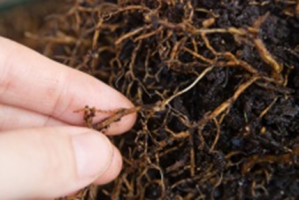Krishna Tulsi (Ocimum sanctum):- Found in almost all regions of India. The leaves of this variety are purple in color. Krishna Tulsi is rich with Vitamin A, Vitamin K and beta-carotene. It also gives valuable sources of magnesium, calcium, iron, potassium and vitamin C. This variety is used in making Tulsi oil which is mosquito repellant and an anti-malarial drug.
Drudriha Tulsi :- Found mainly in Bengal, Nepal, Chatgaon and Maharashtra regions. It gives relief from dryness of throat. It heals swelling of hands and feet and rheumatism.
Ram/Kali Tulsi (Ocimum canum):- Found in China, Brazil, Eastern Nepal as well as in Bengal, Bihar, Chatgaon and the southern states of India. The stem is purple and leaves are green in color and are highly aromatic. It has high medicinal properties i.e. they are adaptogenic, antifungal, antibacterial and enhances immune. It thrives well in warm areas.
Babi Tulsi: Found in Punjab to Trivandrum and in Bengal, Bihar also. The height of plant is 1-2 feet tall. The leaves are 1-2 inches long, oval and pointed. The taste of leave is like cloves and used for flavouring vegetables.
Tukashmiya Tulsi: Found in Western regions of India and Persia. It is used to cure throat disorders, acidity and leprosy.
Amrita Tulsi:- Found in all over India. It has dark purple leaves which create a dense bush. It is used in treatment of cancer, heart disease, arthritis, diabetes and dementia.
Vana Tulsi (Ocimum gratissimum): Found in the Himalayas and plains of India. The height of the plant is taller than other varieties. It has health benefits like relieve stress, stimulates immune system and improve resistance to stomach ulcers. The leaves give spicy and complex fragrance which resembles like clove.
Kapoor Tulsi (Ocimum sanctum): Mainly grown in USA but it is also growing in India from ancient times. It is mainly grown in temperate climates and is easier to grow. The dried leaves are used in making tea.

.jpg)






















